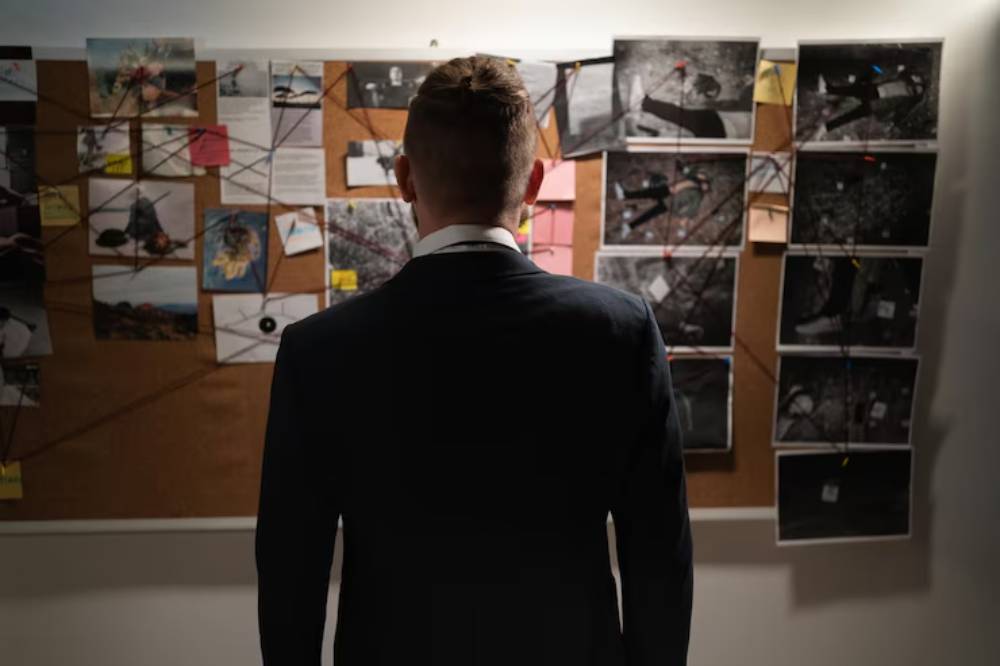
Behind True Crime Documentaries: Ethics & Storytelling
True crime documentaries have become very popular in recent years. They captivate audiences around the world with their gripping stories and complex details. These documentaries explore real-life crimes. They mix mystery and suspense, showing the darker sides of human nature. However, as the demand for these stories grows, so does the scrutiny surrounding the ethics of storytelling within this genre. This blog looks at how ethical storytelling mixes with the appeal of true crime documentaries. It highlights current trends shaping this interesting area.
The Allure of True Crime Documentaries
True crime documentaries are a cultural sensation. They attract viewers with real-life intrigue and drama. The genre captivates by turning real events into gripping stories. It often keeps audiences on the edge of their seats. But why are these documentaries so captivating?
True crime documentaries engage our curiosity about why people commit crimes and what motivates them. They show what drives criminals. They explore the psychological and social reasons behind their terrible actions. This look at the human condition is interesting and a bit unsettling. It offers a unique mix of fun, education, and excitement.
Furthermore, many viewers are drawn to the sense of justice that true crime stories can deliver. In a world where justice often feels far away, seeing a case on screen can bring closure or relief. This emotional investment is a key component of the genre’s enduring popularity.
True crime documentaries use complex storytelling. They blend interviews, old footage, and expert views to build a rich narrative. This approach keeps viewers engaged and helps them understand the events clearly. Also, the genre’s focus on real-life events makes the stories feel more real and urgent, which adds to their appeal.
Ethical Storytelling in True Crime Documentaries
True crime documentaries are gripping, but they raise big ethical questions. They make us think about how real events and people are shown. Ethical storytelling is key in this genre. It balances factual accuracy with engaging narratives.
One of the primary ethical considerations in true crime documentaries is the treatment of victims and their families. Documentarians face a tough challenge. They must show traumatic events but avoid exploiting the pain of those affected. This needs a respectful and caring approach. We must tell the stories with integrity and compassion. For example, letting families review content before it’s released can build trust and promote transparency.
Another ethical challenge is the potential for sensationalism. In the pursuit of captivating narratives, there is a risk of exaggerating or distorting facts to create a more dramatic story. This not only undermines the credibility of the documentary but also has the potential to cause harm to the individuals involved. Ethical storytelling focuses on being accurate and truthful. It avoids sensationalism and instead offers a balanced view of events.
There is also the issue of re-traumatisation. Reliving horrific crimes can be incredibly painful for victims, survivors, and communities. Filmmakers must ask themselves whether the story needs to be told, how it will be told, and who truly benefits from its retelling. Sensitivity, consent, and ethical oversight are all critical components of responsible storytelling.
Documentary Trends: Navigating the Ethics of Storytelling

True crime documentaries are always changing. New trends pop up as audience tastes and ethical concerns shift. One notable trend is the increasing focus on social justice issues within the genre. Documentaries are showing more systemic issues. These include racial bias, wrongful convictions, and problems in the criminal justice system. This shift to a more socially aware approach adds depth to the story. It also encourages viewers to think about important social issues.
High-profile cases like The Central Park Five, Making a Murderer, and The Innocence Files use true crime to highlight larger injustices. This trend is helping redefine the genre’s purpose—from entertainment to education and advocacy.
Another trend is immersive storytelling. This includes interactive documentaries and virtual reality experiences. These new methods let viewers connect with the story more personally. They mix up the roles of observer and participant. They also raise new ethical questions. What impact do these immersive experiences have on viewers? Filmmakers must consider their responsibilities in creating these narratives. How much realism is too much? At what point does interactivity veer into voyeurism?
The rise of streaming platforms has made true crime content more accessible. However, it has also led to a rush for content that often values quantity over quality. With this flood of material, maintaining high ethical standards becomes even more crucial.
Common Mistakes in True Crime Storytelling
Even with more awareness of ethics, filmmakers still make common mistakes in true crime documentaries. One such mistake is the lack of diversity in perspectives. Many documentaries focus on law enforcement or the accused. They often ignore the voices of victims and marginalised communities. This can result in a skewed narrative that fails to provide a comprehensive understanding of the events.
This lack of diversity may also extend to cultural and socioeconomic contexts. Crimes don’t happen in a vacuum. If we ignore societal factors like poverty, discrimination, and mental health, we miss important details. This can lead to misleading views about crime.
Another common pitfall is the oversimplification of complex cases. Filmmakers often aim for a short and engaging story. So, they might miss key details or nuances. This can result in a shallow view of the events. This not only lowers the documentary’s accuracy but also misses the real-life events’ complexity.
The material often gets too dramatic due to cinematic techniques. This includes moody music, dramatic re-enactments, and cliff-hanger editing. These tools can boost viewer engagement. But they can also distort perceptions, mix fact with fiction, and downplay real pain.
Advanced Insights into Ethical Storytelling
Filmmakers can gain by using advanced storytelling tools. These help them handle the ethical issues in true crime documentaries. One such approach is incorporating restorative justice principles into the storytelling process. This means getting input and working together with victims, their families, and others. This way, the story stays fair and respectful. By involving those affected by the events, filmmakers can create a more authentic and empathetic portrayal of the story.
Restorative justice prompts filmmakers to think about the lasting impact of their work. This includes not only viewers but also the people involved in the story. This means thinking about whether the documentary helps with healing or brings back old pain.
Filmmakers can also gain from working with experts in ethics, psychology, and journalism. These professionals can help shape their storytelling. These experts offer key insights into the ethics and challenges of the genre. They help filmmakers make documentaries that are engaging and responsible. Ethics review boards can act as important checkpoints in production. They are like those used in journalism or academic research.
Clear disclaimers and details about methods, sources, and choices build viewer trust. They also clarify how the story was made.
The Role of the Audience
While much of the ethical responsibility lies with the creators, audiences, too, have a role to play. Viewers should stay critical and aware. They need to know that what they see is a crafted story, not a pure truth.
Viewers should think about the bigger picture when they consume content. They need to ask: What stories are being shared? Who is sharing them? And who is missing from the conversation? Asking these questions can promote more thoughtful and responsible viewing. This may also impact the types of content made in the future.
Social media also plays a powerful role in shaping public reaction to true crime content. Online sleuthing and guessing can easily lead to harassment, wrong identities, or spreading false information. As such, audiences must be cautious not to contribute to the very ethical problems that documentaries aim to avoid.
Conclusion: The Future of True Crime Documentaries

True crime documentaries can captivate and educate viewers. They inspire, but they also carry important ethical responsibilities. Filmmakers face a tricky balance as the genre evolves. They need to tell engaging stories while also being ethical and respectful. Filmmakers can make impactful documentaries by using ethical storytelling. They should also watch for new trends. This way, their work entertains and helps us understand the human experience better.
In the future, we will likely adopt a more thoughtful approach to true crime. This new perspective will focus on humanity, not just case numbers or sensational headlines. This change will help viewers. It will also create a more respectful space for people whose lives have been deeply affected by crime.
Viewers should watch true crime documentaries carefully. It’s important to see the complexities and ethics involved in making them. This way, we can see how the genre highlights key social issues. We must also remember the effects these stories have on people and communities.
What are your thoughts on the ethics of true crime documentaries? How do you think filmmakers can strike the right balance between storytelling and responsibility? Share your insights in the comments—we’d love to hear your perspective.


